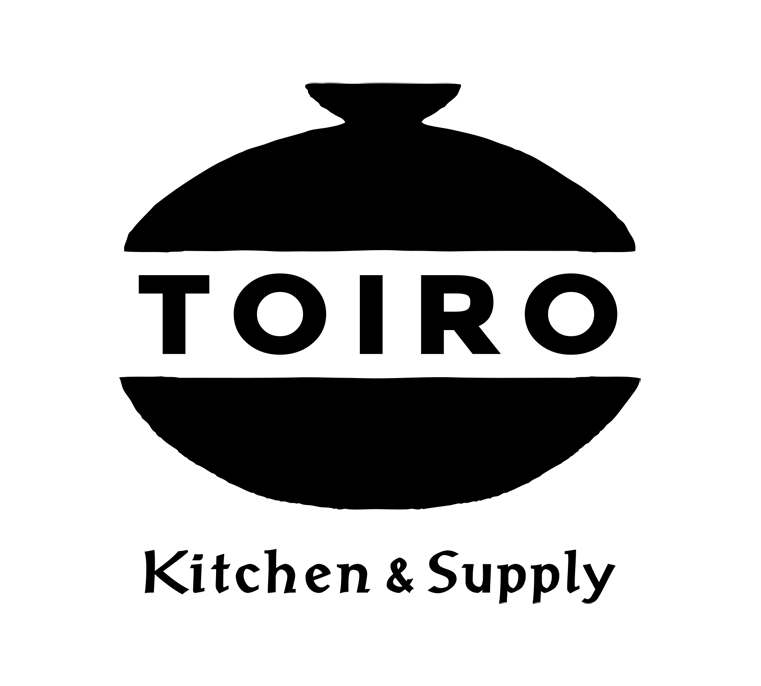
- Date
05.07.2022 (Sat.) - 07.03.2022 (Sun.)
- Days
Saturdays & Sundays
- Time
12:00PM - 8:00PM (PDT)
- Price Range
$48 - $93
- Payment
Credit Card only
- Location
JAPAN HOUSE Los Angeles Gallery, Level 2
In honor of the exhibition “The Art of the Ramen Bowl” and its related culinary program “Ramen Discoveries” JAPAN HOUSE Los Angeles is offering a limited-time pop-up shop featuring hand-crafted ceramic bowls from Mino (Gifu prefecture), the Japanese region famed for its ceramic artistry and as the largest producer of ramen bowls in the country.
In collaboration with TOIRO, a Los Angeles-based Japanese kitchen and tableware store, JAPAN HOUSE Los Angeles presents a special curated selection of stylish ceramic donburi bowls, from artisans of Mino who balance tradition and modernity in their work.
Mino-Ware Available to Purchase
*Availability of each product is subject to change due to demand.
Fudoh-Gama
Oribe Ware’s signature is its deep green glaze. The artists limit excessive decoration to express the identity of each product through beauty in simplicity. These Oribe Ware pieces are crafted by Fudoh-Gama, a small family-owned studio, situated in Toki, the heart of historic Mino-yaki pottery area in Gifu Prefecture. Fudoh-Gama aims to create pieces that embody both grace and boldness through their color and design.
These donburi bowls can be used as an individual bowl for serving rice or noodle dishes, or as a serving bowl for salads and stews to share.
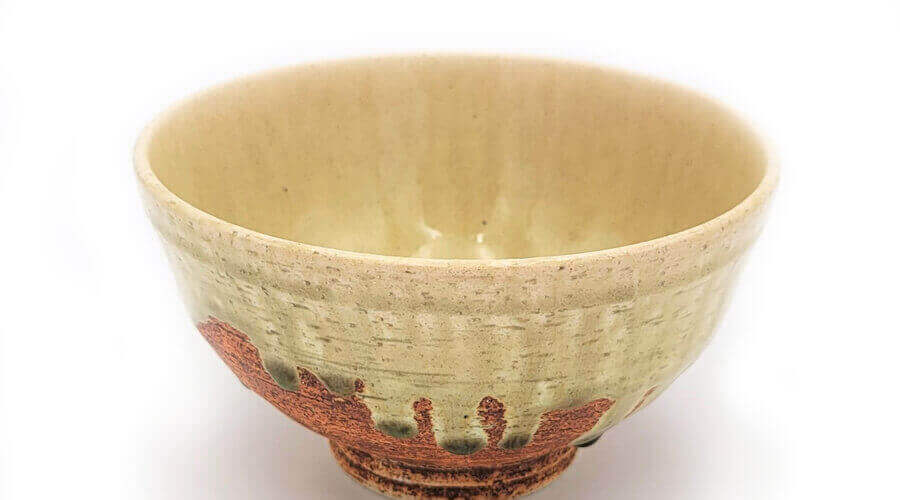
Hai-Yu Nagomi Donburi Bowl
Price: $48
This stunning bowl features the rich terra-cotta tones of the natural clay. The beige and green glaze is allowed to drip down the exterior of the bowl creating a unique design on each dish. The same glaze coats the interior and at the base gathers to form a starburst. In the right lighting the kan-nyu (thin crevices in the glaze) can be seen encircling this unique feature.
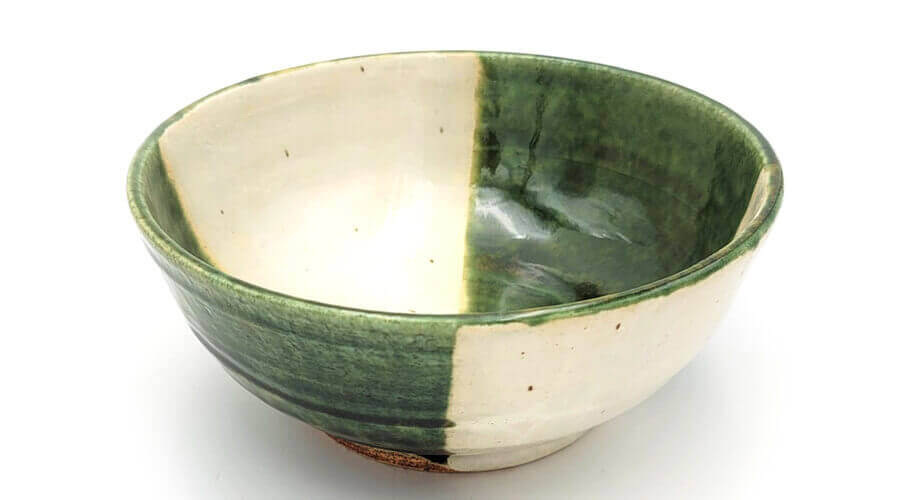
Oribe-Kakiwake Nagomi Donburi Bowl
Price: $53
The design of this somewhat shallow and wide donburi bowl is the classic signature green glaze contrasted against a more matte and natural finish on the white sections.
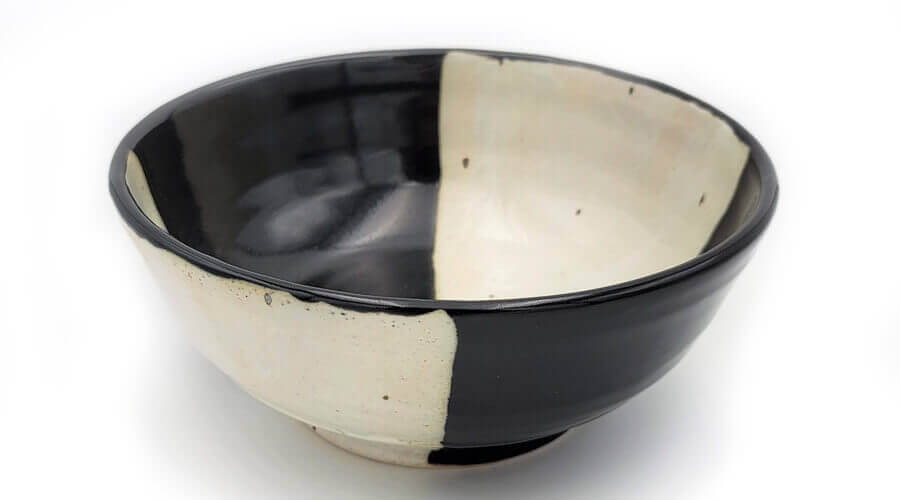
Oribe-Kakiwake Nagomi Donburi Bowl (Black)
Price: $53
The design of this somewhat shallow and wide donburi bowl features black glaze in place of the classic signature green glaze contrasted against a more matte and natural finish on the white sections.
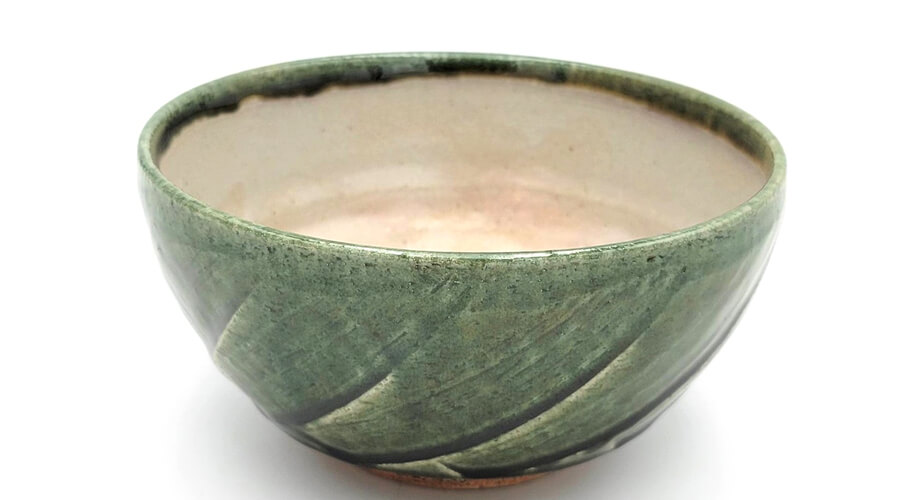
Oribe Sogi Donburi Bowl
Price: $60
Sogi roughly translates as "cut away" or "sliced," thus the diagonal sliced design into the exterior of this donburi bowl. The exterior is glazed in Oribe's signature green glaze, while on the interior a more natural and matte glaze is employed.
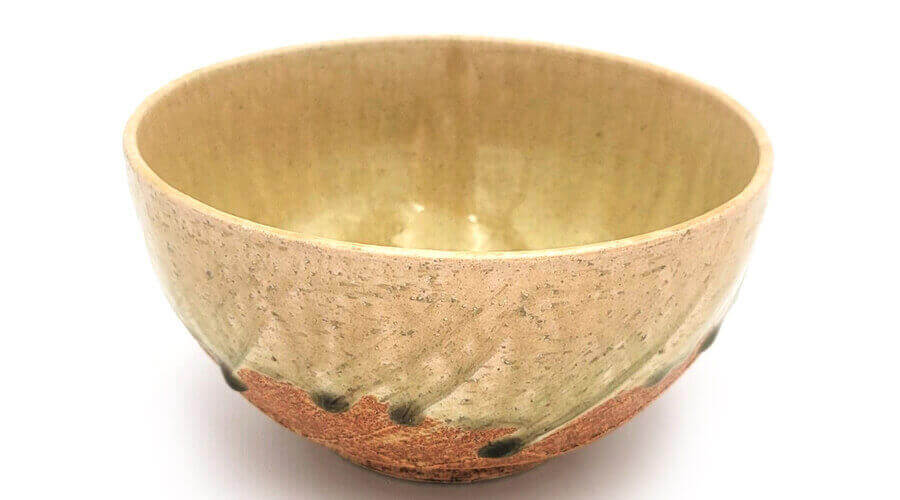
Hai-Yu Sogi Donburi Bowl
Price: $60
Sogi roughly translates as "cut away" or "sliced," thus the diagonal sliced design into the exterior of this donburi bowl. The beige and green glaze is allowed to drip down the exterior of the bowl. The same glaze coats the interior and at the base gathers to form a starburst. In the right lighting the kan-nyu (thin crevices in the glaze) can be seen encircling this unique feature.
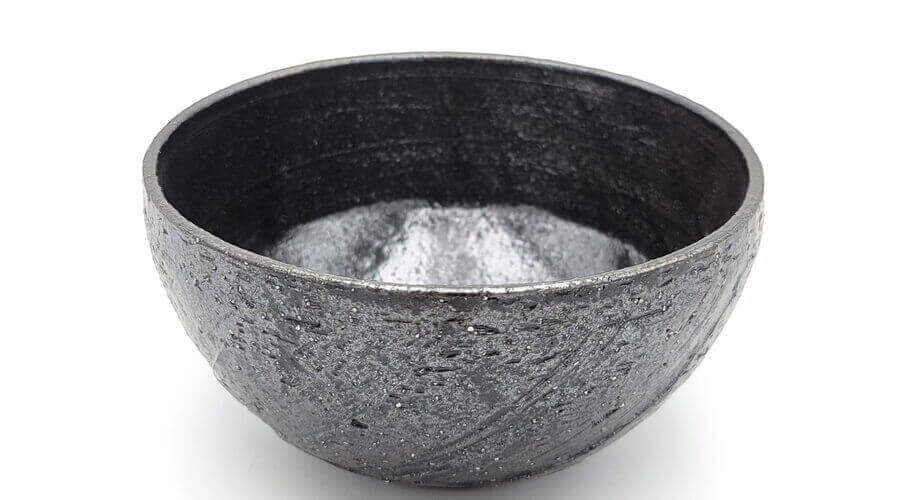
Yaki-Shime Sogi Donburi Bowl
Price: $60
Sogi roughly translates as "cut away" or "sliced," thus the diagonal sliced design into the exterior of this donburi bowl. The metallic black glaze lends this piece its unique appeal and a modern touch. This donburi bowl can be used as an individual bowl for serving rice or noodle dishes, or as a serving bowl for salads or stews to share.
Yamasan-Miyake
Maintaining the tradition of Mino-yaki pottery since the 9th century, Yamasan-Miyake produces high quality tableware and has been a specialty donburi producer for over 20 years. They firmly believe that the overall enjoyment of a dish comes not only from the taste and aroma, but also from the vessel in which it is served. Their tableware is manufactured in a small-lot process allowing them to give attention to each individual piece. As a result, their bowls and plates have lasting durability and vivid color.
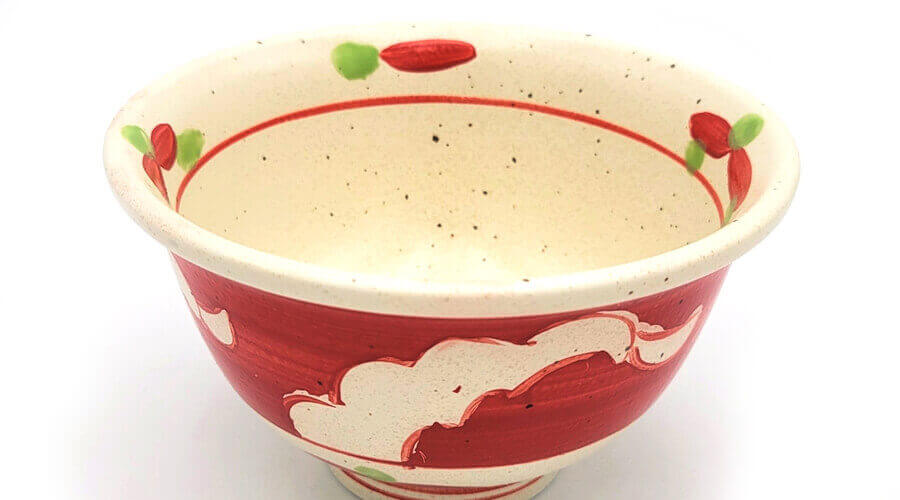
Akadami-Karakusa Donburi Bowl
Price: $59
The traditional hand-painted arabesque design of the Akadami-Karakusa Donburi Bowl is vivid and eye catching. This bowl has a classic shape ideal for rice dishes but could easily be used as a serving dish as well. Bring centuries of craftmanship and artistry to your table with these unique pieces from a legendary manufacturer.
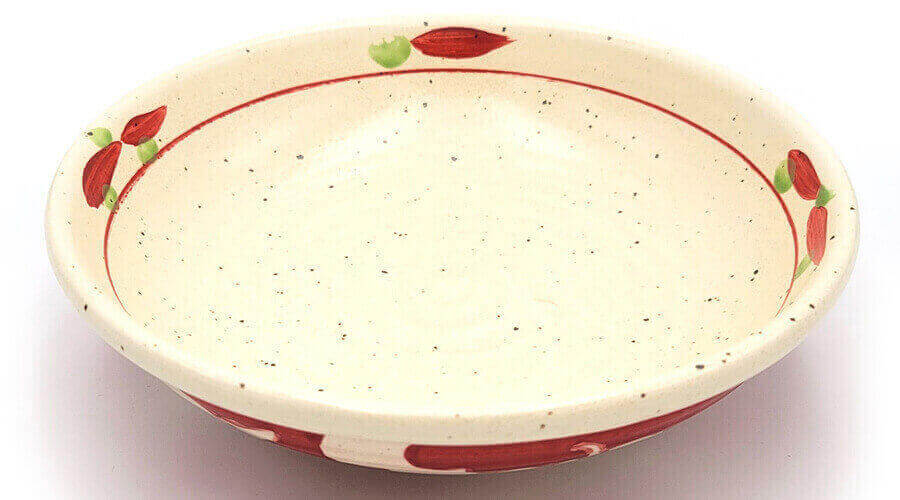
Akadami-Karakusa Donburi Bowl (Shallow Wide)
Price: $93
The traditional hand-painted arabesque design of the Akadami-Karakusa Donburi Bowl is vivid and eye catching. The size and shape of this bowl are ideal for cold noodles, but could also work as a salad bowl, or even for curry or other dishes. Bring centuries of craftmanship and artistry to your table with these unique pieces from a legendary manufacturer.
Usage & Care
- Not microwave-safe.
- Do not set the product on any other direct heat source.
- Not dishwasher safe, hand wash only. Make sure to dry completely before storing.
- Food should not be stored in the bowl, as the porous clay could absorb the moisture and smell of the contents over time.
- Freezing and/or placing the bowl where it will experience sharp temperature change could cause cracking.
Related Content
Exhibition | The Art of the Ramen Bowl
While the three-part exhibition tells the story of ramen’s evolution from simple meal to global icon, it also spotlights the importance of the bowls themselves in elevating noodles to an art form. The majority of ramen bowls in use in Japan come from Mino, in Gifu Prefecture, an area that has been producing high-quality ceramics for over a thousand years, and came to national prominence in the past two centuries for exquisite craftsmanship as well as technical innovation. There are over 15 styles of Mino-ware (or Mino-yaki) officially recognized as traditional handicrafts, and artisans of Mino continue to blend aesthetic experimentation with functionality today. Ten types of Mino-ware are on display in the exhibition, illustrating the diverse styles, shapes and techniques that become a “canvas” for a delicious bowl of ramen.
Article | Craftsmanship of the Ceramic Valley
How did one region become the largest producer of ramen bowls in all of Japan? To learn more about the history of Mino, its centuries of ceramic craft evolution, and the artisans who are continuing that heritage today, read an article exploring the meaning of the name “The Ceramic Valley.”
Pop-Up Offered in Collaboration with
